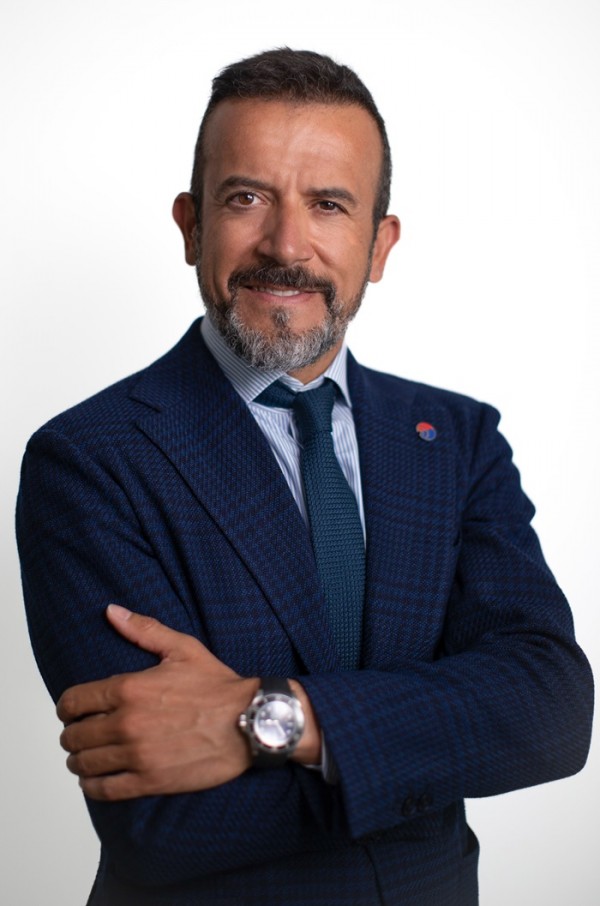Feature Story ERMA FIRST distills the argument for carbon capture
페이지 정보
작성자 최고관리자 댓글 0건 조회 58회 작성일 24-11-17 14:39본문
ERMA FIRST distills the argument for carbon capture
Mr Konstantinos Stampedakis ERMA FIRST Co-Founder Managing Director
Meeting maritime decarbonisation targets for 2030, 2040 and 2050 remains achievable, but stakeholders need to take direct action sooner rather than later, according to ERMA FIRST Group.
Set against a still evolving regulatory framework and uncertainty over when low carbon fuel alternatives will be ready for market, the sustainable marine technology supplier highlights the benefits of a diversified approach to ship greenhouse gas emissions.
Passing IMO “indicative checkpoints” which strive to cut GHGs by 30% by 2030, and by 80% by 2040 needs more than efficiency gains, carbon trading and greener fuels can offer an industry carrying 90 percent of everything. Direct intervention will be needed to capture the emissions conventionally powered ships generate GHGs today, the company suggests.
Class society DNV recently described onboard carbon capture as “an increasingly viable option” that, “supported by sustainable and credible reception and storage schemes… would enable the continued use of conventional fuels and technologies and make a major contribution to emissions reductions.” A 2024 IMO intersessional working group considered evidence from Norway of a pilot installation removing 70% of CO2 from ship exhaust gases.
ERMA FIRST recently secured confirmation that its efforts to deliver onboard carbon capture and storage (OCCS) as a practical method for reducing ship emissions has notable shipowner appeal. One of its two ERMA FIRST CARBON FIT carbon capture solutions was specified in a letter of intent from Capital Gas, for inclusion onboard four 22,000 cbm liquefied carbon dioxide (LCO2) carriers that are due delivery from Hyundai Mipo Dockyard in 2026.
“This project is a major breakthrough not only for ERMA FIRST and our CCS technology but also for shipping’s journey towards low-carbon operations,” commented Konstantinos Stampedakis, Co-Founder & Managing Director, ERMA FIRST Group. “Under normal conditions, CCS systems are expected to cut vessel CO2 emissions by 15% to 30%. For this specific project, the CO2 capture rate is expected to exceed 70%. This will play a significant role in helping Capital Gas to achieve its decarbonisation objectives.”
For Capital Gas, the solution has also brought a cooperation with Babcock covering integration with Babcock LGE’s ecoCO2® downstream CO2 liquefaction CO2 will then be stored on the ship in pressurised low-temperature tanks for subsequent offloading.
ERMA FIRST CARBON FIT holds Approval in Principle (AiP) from both Lloyd’s Register and DNV. In its ‘deep sea’ version, as specified by Capital Gas, the system It uses amine absorption technology based on a proprietary amine solvent to absorb CO2 from flue gases. The regenerated solvent can be re-used, creating a regenerative loop for CCS. A simpler Calcium Hydroxide system is aimed at shortsea vessels.
CARBON FIT for purpose
Positioning CARBON FIT as a practical answer to meet immediate decarbonisation challenges brings with it a responsibility to offer detailed answers on perceived challenges, the supplier acknowledges.
Absorption of CO2 using alkanolamines is a well-established industrial practice, where the rate of CO2 absorption depends on the type of amine used. The solution separates CO2 from the amine at elevated temperatures at the other end of the process for further processing.
ERMA FIRST has selected a proprietary product that is highly resistant to solvent degradation, pretreated to prevent contamination by SOx, NO2 and particulate matter, and functions operates at relatively low temperatures of around 40–60 degrees Celsius.
Marinizing the solution has meant verifying that equipment is not affected by the motions, vibrations and environment brought by shipboard use – a process that involved internal work and consultation with Technology Centre Mongstad in Norway.
Unlike land-based systems, for example, shipboard carbon capture involves intermittent flue gas supplies. The ERMA FIRST system is designed to treat a constant slipstream of the flue gas emitted from the vessel and not the entire flow, with the removal 90% of the CO2 contained in that stream typically equating to 40 – 50% of total sea going emissions.
ERMA FIRST solution has been designed in a modular way for multiple projects, while components can be installed in separate locations onboard to make best use of available space. However, CO2 capture rates are dependent on vessel characteristics, and especially on available power and steam, the company emphasises.
Powering change
The thermal energy needed can be provided using steam from the ship’s boilers, which in turn demands use of a thermally resistant amine blend. Electric energy demand of the ERMA FIRST system is of the order of 400 – 450 KWh / t CO2 and approximately 800 KWh/ t CO2 in thermal energy, which is supplied by the vessel’s auxiliary engine(s) and boiler respectively.
“The plant requires electric power to run electrical components such as pumps, blowers, valves, and steam to regenerate the amine and release the captured CO2,” explains Konstantinos Stampedakis, Co-Founder & Managing Director, ERMA FIRST Group. “The technology is especially effective onboard LNG carriers and tankers, which can usually provide the steam required without modification. More tailored solutions are also feasible where vessels have small boilers - such as bulk carriers.”
The inclusion of carbon capture in the regulatory framework as a means of improving CII and as a tool for EU ETS would go a long way towards overcoming hesitation by some owners on carbon capture, he adds.
But, with regulators now facing up to the scale of the challenge they have set global shipping on decarbonisation, others may conclude that it is clear that the wind is blowing towards an expansion of acceptable solutions.
“It makes competitive, as well as environmental sense to take direct action and invest in a technology which make emissions targets achievable for ships in service.”
■ Contact: ERMA FIRST www.ermafirst.com













